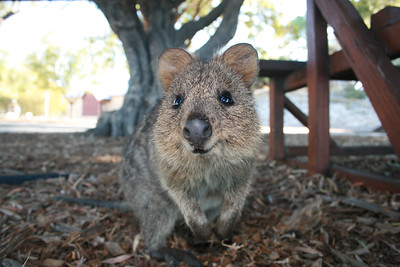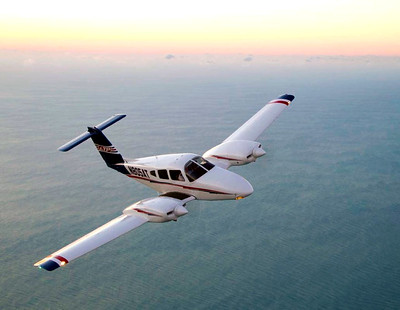It was another hot morning in Fremantle, Western Australia in early January. Forecast for 36 degrees Celsius, 97 in old money. “Gonna be a scorcher, Geek-o!”, said my benevolent host and long-time friend Mike, whom alongside his wife, made me feel very welcome in their stately six-bedroom home for the next three months.
I had just finished a long-term development contract with a blue chip and was taking a three month break to visit my Western Australian friends in order to travel, sample the fine wines and seafood and generally chill. Oh, and having recently obtained my multi-engine and instrument rating, I was hoping to take a nice twin engine bird around the South West coast.
For today’s sortie, I was going to visit Rottnest Island, or Rotto as it’s colloquially known, 10 nautical miles west of Fremantle. I was quite looking forward to meeting the island’s native small marsupials, called quokkas.

I got my flight plan logged, picked up the keys and carried out an external check of the aircraft and then got settled in the left-hand seat. I left the aircraft’s doors and vents opened as the heat inside the cockpit was pretty intense. Back to the checklist:
Ray Ban aviators on: check.
Left fuel selector: crossfeed.
Right fuel selector: on.
Mixtures: rich.
Props: forward.
Throttles: ¼” open.
Magnetos: on.
Master switch: on.
Fuel pumps: on.
Primer: quick squirt.
Starter: engage.
The left prop turned lazily for a few seconds and then the engine caught and spluttered into life, shaking the aircraft from its slumber. I adjusted the engine rpm to 1,200, switched on the alternators and then proceeded to start the right engine.
By now, Hotel Quebec Zulu was in full chorus with both engines running at 1,200 rpm, I’d got the clearance from Jandakot Tower to runway 06L and taxied to the threshold checking brakes, steering controls and instruments. I got to the run up area and went through the before take-off checklist, then checked each engine separately by increasing rpm to 1,500, checking mag drop, carb heat, alternator output, gyro suction, engine temps and pressures in the green, and idle throttle setting. Both engines looked and sounded good and everything was within limits.
There’s a lot to go through before taking-off and checklists are vital to make sure that if you are distracted you don’t miss an important step. Although I’d been through this many times before, I still systematically went though every step of the checklist, confirming each step along the way.
I always remember the apocryphal tale of a pilot jumping into his aircraft and rushing to the threshold and not bothering with the checklist. As he thundered down the runway, his aircraft lifted and then climbed. He pushed down on the yoke only to find it wouldn’t move, despite him pushing harder and harder down on it – it was jammed because he forgot to remove the elevator control protector. The aircraft climbed and climbed until vertical and then it stalled and crashed into the ground killing all on board. Part of the checklist includes two steps where you must make full deflections on the yoke and rudders to ensure free movement. That checklist step would have saved lives.
I’m lined up on 06L and have been cleared for take-off. “Hotel Quebec Zulu cleared for take-off”, I replied to Jandakot Tower.
Brakes on, throttles forward to 75% power, temps and pressures in the green, full power and release brakes. The Piper Seminole lurches forwards as the crescendo of the engine noise rises until full power is quickly achieved. I use the rudder to keep the aircraft on the centreline, right hand on the throttle quadrant in case the throttles slip back and we lose power, there’s a slight crosswind but it’s fine. Airspeed indicator is active and I’m waiting for 75 KIAS (knots indicated air speed), plenty of runway left, pull back on the stick and we’re up, accelerate to 88 KIAS, it’s a positive rate of climb, gear up, power to 25”/2500 rpm, fuel pumps off, fuel pressure checked, accelerate to cruise climb of 105 KIAS.
Phew! A lot to do in a very short space of time. I turn the aircraft towards the west and climb to around 4,000 ft and head towards Rottnest. I adjust the air/fuel mixtures for maximum power and efficiency, switch the autopilot on with heading and attitude selected and contact Rottnest CTAF (Common traffic advisory frequency – an unmanned common radio frequency that aircraft use to communicate their positions and intentions to other aircraft). I switch one of the navaids to point to the Rottnest NDB (non-directional beacon) to make sure I’m on track. Sadly there’s no GPS on this aircraft so it’s back to radio navigation basics.
It’s at this time of proceedings that I always feel I should crack open a beer now the autopilot has taken over. All I see in front of me is glorious blue sky and glorious blue sea as I leave Fremantle behind me. My camcorder has been recording the events and the radio chatter so far.
Slight drift from the wind so I tweak the autopilot heading bug to realign the aircraft on the correct track to Rottnest. It’s not that far out and we should be overhead in about 10 minutes.
Suddenly my headphones crackle and a voice with a strong Australian twang says, “Rottnest UNICOM this is military jet carrying out a procedural NDB approach, request all aircraft to stay clear of the area, please report your positions”.
What? WTF? This wasn’t in the training manual? Who was online? Shall I call first? Now? What do I say? I started getting flustered, my original plans to approach Rottnest in peace and tranquillity were now thrown out of the window and I moved the autopilot heading bug to the south of the island.
“Er, this is Hotel Quebec Zulu, PA-44, one on board, at four thousand, heading two five zero for the south of the island”.
“Roger Hotel Quebec Zulu, just remain clear, let us know when you see us bust through the clouds”
“Er, yeah, roger that”

Piper Seminole PA-44 [Public domain], via Flickr.
I thought I saw the other aircraft but it turned out to be a squashed fly on the cockpit window. I was heading out to sea, well past the island. This was the Indian Ocean – there was nothing for thousands of miles where I was going. I turned to the left again keeping well away from Rottnest. I stated my intentions on the UNICOM, “Hotel Quebec Zulu turning left heading one zero zero”.
Nothing.
All of a sudden, I see a bizjet diving towards the island and then climbing rapidly. “Hotel Quebec Zulu we’re cleared of the island, thanks for your cooperation, have a good day”.
“Good day, Hotel Quebec Zulu”, I said, in a slightly too high a voice that may have betrayed my flappiness.
Well, I pointed the aircraft to Rottnest airfield – the winds were coming in from the north-east, so I set up my approach for runway 09 and I called out my intentions on the UNICOM, “This is Hotel Quebec Zulu coming in for zero nine landing straight in approach five miles out”.
Nothing. Good, presumably no other aircraft around. Still, it’s good airmanship to scan the area meticulously.
Back to the checklist. Christ, no, no time for the checklist, I’m almost at the threshold. Aaaah, this is all going horribly wrong. That military business jet had really unsettled me, I’m approaching the airfield from a position I hadn’t planned for. Right quick:
Er, fuel pumps on
Cowl flaps, er, dunno, leave them, not important
Mixtures, er, red levers, fully forwards
Belts, harnesses, yeah, yeah, whatever
Flaps 15
Throttle off, need to lose altitude, oh bollocks, now there’s a pretty nasty crosswind here and it’s getting choppy as the hot air rises from the island due to the intensity of the sun.
Now that has thrown me. I noticed that the aircraft has shifted to the left of the centreline of the runway. I point the nose right and apply right rudder and left yoke and crab at quite an angle, more than I expected.
*beep* *beep*
OK, looking better, not drifting any more. OK, ah yes, another thing I remembered from the checklist: Landing Light On. Click. Done. Mustn’t forget the shiny thing.
*beep* *beep*
Ok, looking better. Airspeed still too high, need 75 KIAS and we’re doing 85, throttle off, little more sideslip, full flap.
*beep* *beep*
Was it cowl flaps open or closed? Dunno. Not important. Christ, that was a quite a bit of turbulence. Get the nose up again. Right here we go, 600 ft, all aligned, looking good, 80 KIAS, damnit, still too high.
*beep* *beep*
What’s that beeping sound? Is it a navaid? Dunno. 500 ft. PUF checks…
And right at this moment, one of the most important checklist tasks that I had assigned to memory, rather like the motorcyclist “lifesaver” check before he overtakes, this little beauty saved my arse big time.
*beep* *beep*
The PUF check is used just before you land are on finals. It’s a scan that goes from left to right across the cockpit. We sometimes say “Two Blues, Two Reds, Three Greens”. The P stands for Power. I looked at my throttle quadrant: throttles set, prop levers max fine, red mixture levers full rich, three greens… WTF!!!!! SHIT!!! NO LIGHTS!!! I ONLY WENT AND FORGOT TO PUT DOWN THE BLOODY GEAR!!! That’s what the beeping sounds was: an alarm that activates when a combination of low power and no landing gear are selected, normally when the aircraft is in the landing configuration.
I dumped the gear selector down and three greens came up in a few seconds. The F part of the step was for Flaps which were at full.
I performed a landing that was infinitely better than the one that would have occurred if I hadn’t remembered the PUF check before hitting the deck.
******
When I returned to Fremantle, I went downtown and took a nice basket of red snapper and chips from Cicerello’s restaurant and wandered over to the beach to watch the sun go down. I had learned my lesson. Never miss going through a checklist, even if you are in a state and flapping. And thank heavens some of the vital steps are repeated in checklists, because they know we’ve all been down that route of forgetting things under duress.
And as the orange sun kissed the crimson sea I thought about the quokkas and how fucking stupid they looked.
But perhaps not quite as stupid as me crawling out of an aircraft that had belly “landed” without its undercarriage in the down and locked position.
© Beware of Geeks bearing GIFs 2017



